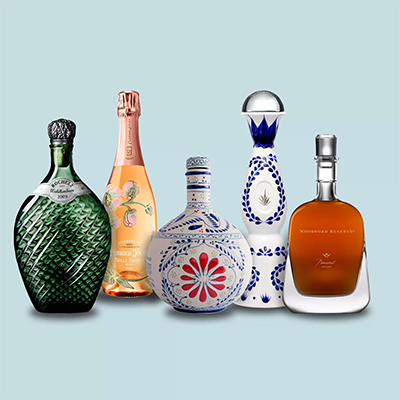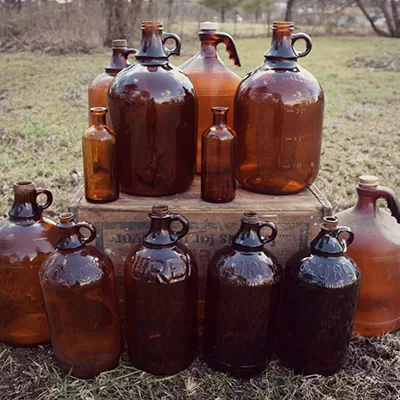Spirit Glass Bottles
QLT Glass - Elevate Your Brand with Top-Quality, Customizable Bottle Solutions.
The Products QLT Offers You
Located in the heart of China, QLT Glass’ factory, with 15 advanced production lines, is renowned for producing top-quality spirit, liquor, and gin bottles, serving major clients in Europe and North America.
Emphasizing the art of bottle making, QLT Glass manages each production line with precision, achieving consistency and perfection in every product, with a capacity of 500,000 pieces per day, validated by an SGS factory inspection.
Beyond production, QLT Glass stands as a crucible of innovation and quality, inviting clients to explore a world where each bottle is a masterpiece of excellence and artistry.
4. QLT Glass ensures rapid dispatch of best-selling products, with same-day shipment for swift payments and a variety of flexible payment options. All products meet international standards, certified by institutions like TUV, SGS, and LFGB.
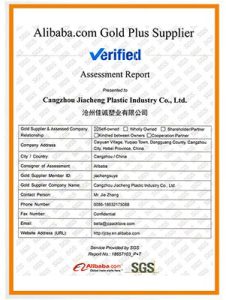
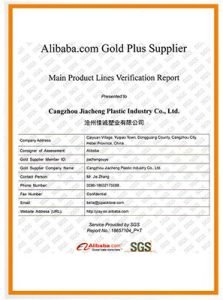
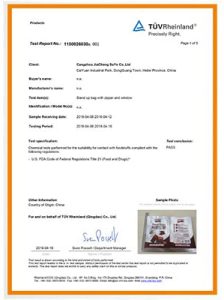
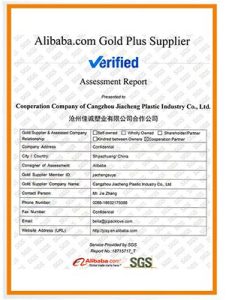
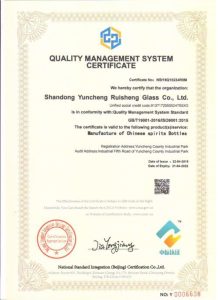

Professional spirits bottle manufacturer
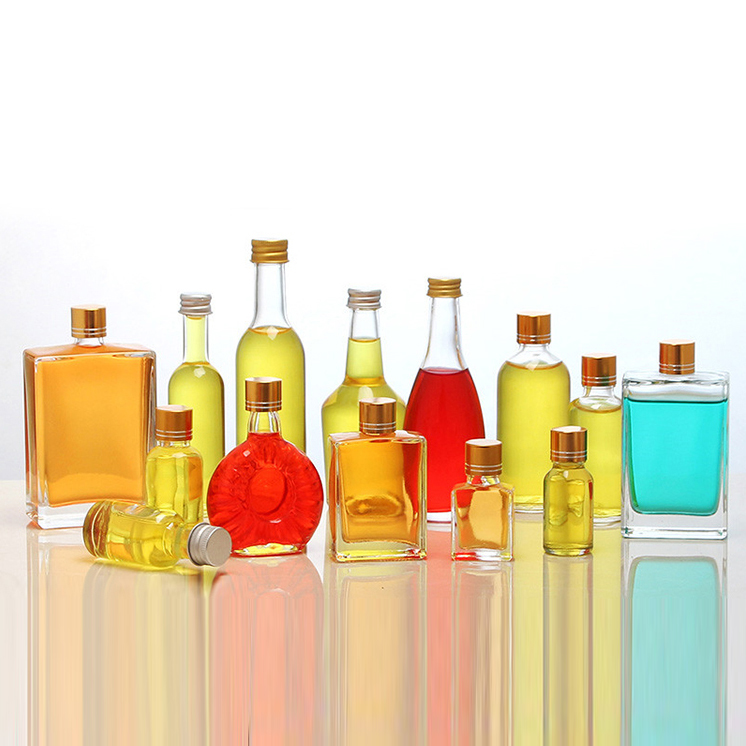
Mini Spirit Bottles
Small wine bottles, typically holding less than 375ml, offer portability and convenience, making them ideal for single servings, wine tastings, and gifts. Their compact size reduces waste for smaller households and enhances the shelf life of wine once opened.
500ml Spirit Bottle: The 500ml spirit bottle is a classic, providing ample space for your spirits while ensuring they remain the center of attention. Its design is both practical and aesthetically pleasing, making it a favorite among many.
750ml Spirit Bottle: Our 750ml spirit bottle is the industry standard for full-sized spirits, offering a perfect balance between quantity and quality. Its robust design ensures durability while its elegant form exudes sophistication.
Large Spirit Bottle: Make a statement with our large spirit bottles, designed to house your spirits in grandeur. Their substantial size and imposing presence make them perfect for premium and aged spirits.
Customized material quality for Your Unique Projects!
Glass spirit bottles are crafted from various materials, each offering unique characteristics that contribute to the bottle’s appearance, durability, and overall quality. Among the various types of glass used, Crystal White Flint, Super Flint, and Extra Flint stand out for their high-quality and aesthetic appeal. Below is an introduction and detailed analysis of these three types of materials.
Introduction: Crystal White Flint glass is renowned for its exceptional clarity and brilliance, making it a preferred choice for high-end spirits and luxury beverages. The material gets its name from the use of flint, a type of rock that was historically used in the glassmaking process.
Characteristics and Differences:
- Clarity: Crystal White Flint glass boasts a remarkable level of transparency, allowing the color of the spirit inside to shine through without any distortion.
- Purity: The glass is virtually free of any impurities, ensuring that it does not interact with the contents and alter the taste or aroma of the spirit.
- Weight: This type of glass tends to be heavier, giving a sense of quality and luxury to the product.
- Cost: Due to its high-quality characteristics, Crystal White Flint glass is generally more expensive to produce and purchase.
Introduction: Super Flint glass is another high-end option for spirit bottles, valued for its bright appearance and durability. It is crafted using special manufacturing processes to achieve its distinctive properties.
Characteristics and Differences:
- Brightness: Super Flint glass has a radiant brightness that enhances the visual appeal of the bottle and its contents.
- Durability: It is highly resistant to scratches and impacts, ensuring that the bottle maintains its appearance over time.
- Versatility: This material can be molded into a wide variety of intricate shapes and designs, allowing for greater creativity in bottle design.
- Price: While Super Flint glass is more affordable than Crystal White Flint, it still represents a premium option in the market.
Introduction: Common Flint glass is known for its high clarity and resilience, offering a balance between quality and affordability. It is commonly used for premium spirit bottles that require a clear and durable container.
Characteristics and Differences:
- High Clarity: Common Flint glass provides a clear view of the spirit inside, though it may not achieve the same level of brilliance as Crystal White Flint or Super Flint.
- Resilience: It offers good resistance to impacts and scratches, protecting the product during transportation and handling.
- Affordability: Common Flint glass is more affordable than the other two types, making it a popular choice for a wide range of products.
- Versatility: Like Super Flint, Common Flint glass can be molded into various shapes and designs, providing flexibility in bottle design.

Comparative Analysis
When comparing the three types of glass materials, several key factors stand out:
- Clarity and Brilliance: Crystal White Flint glass is the clear winner in terms of clarity and brilliance, followed closely by Super Flint, and then Extra Flint.
- Durability: All three types of glass offer good durability, but Super Flint has a slight edge due to its enhanced resistance to scratches and impacts.
- Cost: Crystal White Flint is the most expensive option, reflecting its premium quality, while Extra Flint is the most budget-friendly choice.
- Design Flexibility: Super Flint and Extra Flint provide greater versatility in terms of bottle design due to their molding capabilities.
Conclusion
Choosing the right material for a glass spirit bottle depends on a variety of factors, including the brand’s positioning in the market, budget constraints, and design preferences. Crystal White Flint offers unparalleled clarity and a luxurious feel, making it suitable for high-end spirits. Super Flint provides a bright and durable option, while Extra Flint offers a balance between quality and affordability. Each material has its unique characteristics and advantages, and the final choice should align with the brand’s values and customer expectations.
The difference between different liquor bottles
The differences between bottles designed for different types of spirits – vodka, gin, rum, whiskey, tequila, liqueur, brandy, and general alcohol or liquor – largely stem from tradition, branding, and the practical requirements of the beverage itself. Below is a breakdown of the typical characteristics of each bottle type:
- Characteristics: A general category that can include a variety of designs, depending on the type of liquor.
- Material: Glass, can be clear or tinted.
- Common Mouth Type: Varies widely.
- Characteristics: Often sleek, tall, and clear to showcase the purity of the vodka. Simple and modern designs are common.
- Material: Usually made of clear glass.
- Common Mouth Type: Screw cap or cork.
- Characteristics: Can vary widely but often have a more vintage or apothecary style. Clear or tinted glass is common.
- Material: Glass, clear or tinted.
- Common Mouth Type: Screw cap, cork, or bartop.
- Characteristics: Often has a stout and robust design, reflecting the nautical history of rum. Darker glass is common.
- Material: Glass, often amber or green.
- Common Mouth Type: Cork, bartop, or screw cap.
- Characteristics: Traditionally has a broad base and straight sides. Designs can range from simple to intricate.
- Material: Glass, clear or tinted.
- Common Mouth Type: Screw cap or cork.
- Characteristics: Designs can vary widely, from simple and elegant to ornate and intricate. Often has a Southwestern or Mexican aesthetic.
- Material: Glass, clear or tinted.
- Common Mouth Type: Cork or bartop.
- Characteristics: Often has a unique and distinctive design to stand out on the shelf. Can be clear or colorfully designed.
- Material: Glass, can be clear or colored.
- Common Mouth Type: Screw cap, cork, or bartop.
- Characteristics: Typically has a rounded body and short neck, with a traditional and elegant design.
- Material: Glass, clear or tinted.
- Common Mouth Type: Cork or bartop.
Common 7 Types of Spirit Bottle Mouths
and Their Corresponding Bottle Caps
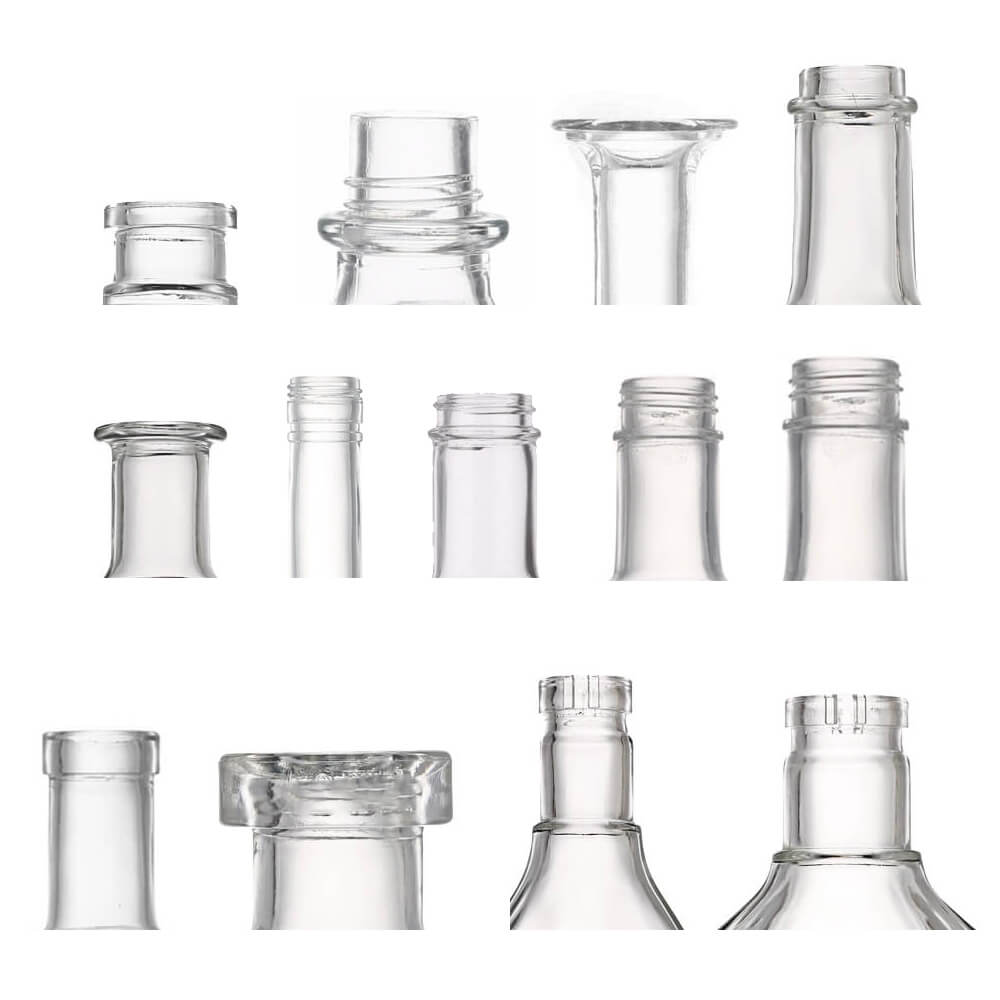
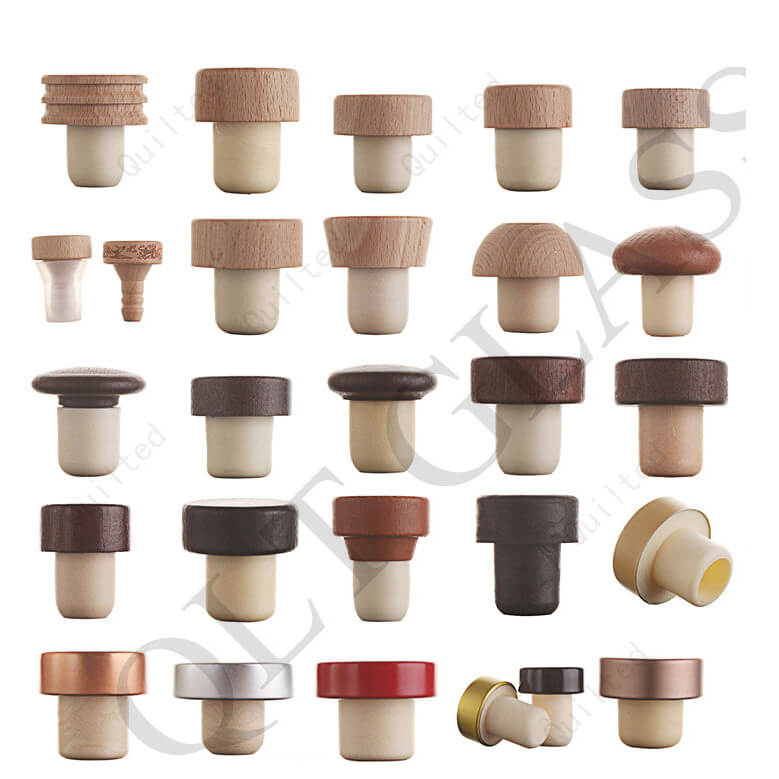
What should you pay attention to when purchasing glass bottles
Importing glass bottles from China overseas requires careful consideration of various factors to ensure a smooth and successful transaction. Here’s a brief rundown of precautions to take across different aspects:

Never Price Increase
- Stability: Monitor the exchange rate closely as fluctuations can significantly affect your costs. Consider using forward contracts to lock in a rate and mitigate risks.
- Transaction Fees: Be aware of any transaction fees involved in currency exchange and factor them into your budget.

Free Sample
- Quality Check: Request samples to verify quality and ensure the product meets your specifications.
- Shipping Costs: Be prepared to cover shipping costs for samples, and clarify this with the supplier beforehand.
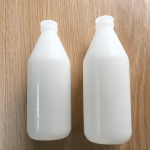
3D PRINT
- Accuracy: Use 3D proofing to visualize the final product and check for design accuracy.
- Feedback Loop: Establish a clear feedback loop with the supplier to make any necessary adjustments promptly.
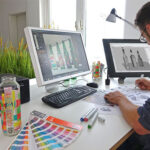
Free Design
- Clarity on Terms: Confirm if the supplier offers free design services, and understand the scope and limitations of what they provide.
- Intellectual Property: Ensure that the design process protects your intellectual property and does not infringe on others’.
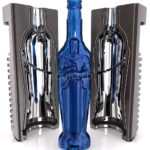
Packaging Mould
- Costs and Ownership: Understand the costs involved in mold customization, and clarify ownership of the molds.
- Future Use: Discuss the possibilities of reusing molds for future orders to reduce costs.
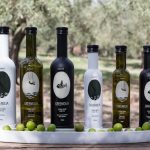
Printing Process of Glass Bottles
- Consistency: Ensure consistency in appearance, especially if ordering large quantities.
- Specifics: Clearly communicate your customization requirements to avoid misunderstandings.
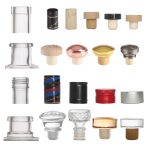
Bottle Caps
- Compatibility: Verify that the bottle caps are compatible with the bottle mouths to ensure a proper seal.
- Aesthetics: Choose caps that complement the bottle’s design and enhance the product’s overall appeal.
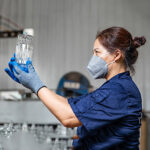
QC
- Third-Party Inspection: Consider hiring a third-party inspection service in China to check the quality before shipment.
- Clear Criteria: Establish clear quality criteria and communicate them to the supplier and inspector.

The bronzing process uses the principle of hot-pressing transfer to transfer the aluminum layer in the anodized aluminum to the surface of the substrate to form a special metal effect. Because the main material used for bronzing is anodized aluminum foil, bronzing is also called anodized aluminum hot stamping. Anodized aluminum foil is usually composed of multi-layer materials, the substrate is often PE, followed by release coating, color coating, metal coating (aluminum plating) and glue coating. Hot stamping does not mean that the hot stamping is golden. There are many kinds of hot stamping paper materials, including gold, silver, laser gold, laser silver, black, red, green, etc.
Screen printing refers to the use of silk screen as a plate base, and a screen printing plate with graphics and text is made by a photosensitive plate-making method.
Advantages of screen printing:
(1) Not limited by the size and shape of the substrate
(2) The layout is soft and the printing pressure is small
(3) The ink layer has strong coverage
(4) Suitable for various types of ink
(5) Strong optical rotation resistance
(6) Flexible and diverse printing methods
(7) Plate making is convenient, the price is cheap, and the technology is easy to master
(8) Strong adhesion
(9) It can be screen printed by hand or machine printed
(10) It is suitable for long-term display, and the outdoor advertising is expressive
Decal printing is to print transferable graphics on paper or plastic film coated with adhesive film to become decals or decals, stick it on the glass bottle, and then put it on the kiln. According to the requirements of different materials, after 400-500 °C, and even calcinations to temperatures of 800 °C, the desired color appears.
| This Process Is Perfectly Engraved With Precise Relief And Depth Onto The Mold. A Powerful Way For A Brand To Leave Its Imprint In The Glass, And Can Be Economical In Terms Of Development Fees. A Real Solution For Wine & Spirits Brands Who Want To Appropriate A Bottle And Sublimate Their Product. |
The frosted wine bottle is processed by the frosting process to form a hazy, noble and elegant visual effect, and the hand feeling is also more delicate and smoother than ordinary glass wine bottles. Frosted wine is particularly sensitive to temperature. For example, after frosting a wine bottle, it can not only quickly improve the product grade, but also effectively prevent the entry of light, avoid the reaction of light to the wine to the greatest extent, and better ensure the quality of the wine. , relatively prolong the shelf life of wine. Compared with other packaging types, frosted wine bottles have unique advantages in terms of practicality and production technology. There is a lot of competition in the beverage industry now. If you want to develop in the competition, you must increase your own design and increase or decrease in weight.
However, not only the winery, but also the cosmetic packaging industry also uses frosted bottles as the main material in the cosmetic packaging market, because of its noble and elegant appearance, it is ignorant of the majority of cosmetic consumers. The frosted glass surface has extremely fine frosted particles, which have a delicate hand feel, and the surface of the bottle exudes a luster like jade. Moreover, the stable characteristics of the glass itself can effectively prevent the chemical reaction between the cosmetic and the cosmetic bottle under the light irradiation, so as to better ensure the quality of the cosmetic.
Electroplating is the process of plating a thin layer of other metals on the surface of glass bottles using the principle of electrolysis. Improve reflectivity and increase aesthetics
The final stage of bottle or decanter decoration. Accessories can help reach the highest level. We have over 1000 free samples of wine bottle caps for you to choose.
FAQ
We can make samples, but to do so requires an investment from you of about US $1,000. This includes bottle mould fee, sample production fee and express fee, etc.
For custom superflint bottles, If we have stock, smaller MOQ.If out of stock, MOQ is 3000-50000pcs.
Symmetrical 750ml bottles can fit approximately 24K if they are packed with boxes, or roughly 27K if they are packed in bulk. Irregularly shaped 750ml bottles can usually only fit approximately 21K if they are packed in boxes. Roughly 60K standard 12 oz. beer bottles will fit in a 40HC.
Generally, yes. The MOQ is the minimum we must order from the factory. It is not required that we ship this all at once.
The base cost to produce a mold is roughly US $1,000 for a standard bottle. The greater the size and complexity of form, the greater will be the cost to produce the mold.
You can expect to receive your first container of bottles in 4-5 months provided that the process goes smoothly. This breaks down as follows: Samples usually take 4-6 weeks from the time the mold is ordered. If mold modifications are required, you can expect an extra 2-4 weeks to get new samples each time a change is made, depending on how busy the factory is. Once the sample is approved, it takes 3-4 weeks to complete the full set of production molds. We can usually schedule production within 2-3 weeks after. Shipping transit times range from 2.5 weeks for U.S. west coast to about 4-5 weeks for east coast ports.
Fusion offers a wide range of closures: metal screw cap (ROPP and stelvin), plastic screw cap, cork (synthetic or natural), etc. We can source just about any kind of closure you might need, and we can offer a range of tamper evidence functionalities.
There are many methods of providing tamper evidence on bottles. Some closures have breakaway rings on the bottom that come off when you unscrew the cap. Others utilize shrink-wrapped plastic or foil capsules around the bottleneck that must be torn off before the bottle can be opened. Metal twist off lug caps feature a safety button in the center that pops up once the bottle has been opened. Many liquor bottles simply have a piece of paper glued across the closure to the bottle surface that gets torn in the process of opening the bottle.
Fusion offers two labeling options, including printed labels that are glued to the outside of the bottle, and ceramic heat transfer printing, a method of applying a decal to the bottle that gets baked into the surface of the glass. The cost of the label generally depends on the number of colors and the size of the label. We also offer acid etching, or frosting, for a decorative pattern, or as an overall treatment. Further, we offer custom bottle coloration via food-safe spray coating, a process that bakes externally applied color into the surface of the glass. Alternatively, color may be added directly to the glass material during production, but coloration of this sort only applies in situations involving extremely high quantity production runs.
Generally, bottles are either packed in reusable cardboard boxes with dividers, or they are packed in bulk on cardboard trays on pallets. Packing in boxes gives added protection to bottles during transit, and is often better for bottles that we ship prelabeled. We can offer varying degrees of cardboard quality and can have the boxes custom printed with a client’s corporate or product-specific branding. Customers frequently choose this option, because it allows them to reuse the shipping boxes for the sale of their product. The cost of a box depends on the overall size, the quality of the cardboard, the number of colors required for printing, and the size of the area to be printed. Bulk packing helps bring down the unit shipping cost by allowing a greater number of bottles to be packed in a single container.
Given the inherently fragile nature of glass, there will almost certainly be breakage during transit, but it is usually minimal (losses of less than 1%). You only need to provide relevant evidence of the damaged bottle, and we will make up for the loss in your next shipment
The best way to begin the design process is to survey the current market offerings to get a feel for the style of bottle that you want. From there, we can provide design assistance and develop drawings and specifications based on your requirements. If you have designs ready, please be sure to supply us with vector art drawings to work from (e.g. AI, DWG, CDR). In conceiving your design, please bear in mind that design elements such as sharp edges, corners and unusual shapes will add significantly to the complexity of the manufacturing process, which will in turn add to the overall production costs.
No. Unless they are well sealed, there is no way to guarantee that the bottles would remain sterile during transit. If sterilization is required, it is better to do it near or at the bottling facility, just before filling.
Yes, we advise that clients clean the bottles prior to filling.
Hot filling is a process used to increase the shelf life of a bottled food product. Hot filling at high temperatures can cause the glass to crack or explode due to the temperature variation between the internal and external surfaces of the bottle. Adding extremely hot liquid to a bottle causes the interior surface of the glass to heat up and expand quickly, while the outer surface remains at room temperature and does not expand. The stress that results from the exposure to these extreme temperature differences can cause breakage.
When filling the bottles with hot liquid, what is the maximum suggested temperature difference between the bottle and the liquid? 42ºC is usually the maximum we will guarantee. While higher temperature differentials are often manageable, we will not guarantee anything greater. If your particular hot filling process will involve a greater temperature differential, then we suggest that the bottles be preheated so as to avoid the possibility of significant breakage during filling.
Bottles shapes can be protected with design patents. It is possible to copy a patented bottle and not violate the patent if the shape and size of the bottle are changed slightly from the existing design. Bottles can also be trade-dressed. This is similar to a trademark, and it means that other companies are prohibited from using the same bottle shape and label style for the same product. However, one could sell a different product in the same shape bottle and not violate applicable trade dress.
We work with a variety of vendors who proved a range of glass quality options. Average flint glass has a slight grey or greenish tint to it. This is the most common type of translucent glass. Higher quality flint glass has better clarity, but is more expensive as a result. Ultra premium “super flint” has the highest quality and clarity, and is thus the most expensive, but super flint is the standard glass from which bottles for premium spirits, particularly vodka, are made.
The glass itself has no lead or other harmful chemicals. Upon request, QLT can have the bottles tested at an independent test facility to confirm. The ink used for the labels often has lead and/or chromium to increase the vibrancy of the colors. Since the labels are not on a surface that comes in contact with the food product, there are no regulations prohibiting the use of lead or chromium. However, upon request, QLT can use inks with no lead or chromium
All of the our vendors use varying levels of recycled glass. The amount used depends on the target glass quality (recycled glass lowers quality) and the requirements of the customer. The highest quality glass will use about 10% recycled material. Lower quality glass has a maximum of about 40% recycled material.
Yes,we can.We could offer various printing ways: screen printing, hot stamping, decal attachment, frosting, sandblasting, etc.
Yes,you can.Our Samples are only free for the customers who confirm order. But the freight for express is on buyer’s account.
Yes, we can. But the quantity of each ordered item should reach our MOQ.
EXW – Ex Works. This is the cost at the vendor door. No shipping of any kind is included in the price.
FOB – Free On Board cost. This is the cost of the product on a vessel at the FOB location. It means that freight from the vendor to the vendor’s port including all export duties and clearance fees have been paid.
CIF – Cost with Insurance and Freight. This is the cost of the product shipped to the CIF port (nearest to the customer) but does not include import duty, customs clearance fees, or domestic shipping to the final location.
DDU – Delivery, Duties Unpaid. This the cost including door to door shipping, but not including import duties or customs clearance fees.
DDP – Delivery, Duties Paid. This the cost of the product door to door including everything.
We can make samples, but to do so requires an investment from you of about US $1,000. This includes bottle mould fee, sample production fee and express fee, etc.
For custom superflint bottles, If we have stock, smaller MOQ.If out of stock, MOQ is 3000-50000pcs.
Symmetrical 750ml bottles can fit approximately 24K if they are packed with boxes, or roughly 27K if they are packed in bulk. Irregularly shaped 750ml bottles can usually only fit approximately 21K if they are packed in boxes. Roughly 60K standard 12 oz. beer bottles will fit in a 40HC.
Generally, yes. The MOQ is the minimum we must order from the factory. It is not required that we ship this all at once.
The base cost to produce a mold is roughly US $1,000 for a standard bottle. The greater the size and complexity of form, the greater will be the cost to produce the mold.
You can expect to receive your first container of bottles in 4-5 months provided that the process goes smoothly. This breaks down as follows: Samples usually take 4-6 weeks from the time the mold is ordered. If mold modifications are required, you can expect an extra 2-4 weeks to get new samples each time a change is made, depending on how busy the factory is. Once the sample is approved, it takes 3-4 weeks to complete the full set of production molds. We can usually schedule production within 2-3 weeks after. Shipping transit times range from 2.5 weeks for U.S. west coast to about 4-5 weeks for east coast ports.
Fusion offers a wide range of closures: metal screw cap (ROPP and stelvin), plastic screw cap, cork (synthetic or natural), etc. We can source just about any kind of closure you might need, and we can offer a range of tamper evidence functionalities.
There are many methods of providing tamper evidence on bottles. Some closures have breakaway rings on the bottom that come off when you unscrew the cap. Others utilize shrink-wrapped plastic or foil capsules around the bottleneck that must be torn off before the bottle can be opened. Metal twist off lug caps feature a safety button in the center that pops up once the bottle has been opened. Many liquor bottles simply have a piece of paper glued across the closure to the bottle surface that gets torn in the process of opening the bottle.
Fusion offers two labeling options, including printed labels that are glued to the outside of the bottle, and ceramic heat transfer printing, a method of applying a decal to the bottle that gets baked into the surface of the glass. The cost of the label generally depends on the number of colors and the size of the label. We also offer acid etching, or frosting, for a decorative pattern, or as an overall treatment. Further, we offer custom bottle coloration via food-safe spray coating, a process that bakes externally applied color into the surface of the glass. Alternatively, color may be added directly to the glass material during production, but coloration of this sort only applies in situations involving extremely high quantity production runs.
Generally, bottles are either packed in reusable cardboard boxes with dividers, or they are packed in bulk on cardboard trays on pallets. Packing in boxes gives added protection to bottles during transit, and is often better for bottles that we ship prelabeled. We can offer varying degrees of cardboard quality and can have the boxes custom printed with a client’s corporate or product-specific branding. Customers frequently choose this option, because it allows them to reuse the shipping boxes for the sale of their product. The cost of a box depends on the overall size, the quality of the cardboard, the number of colors required for printing, and the size of the area to be printed. Bulk packing helps bring down the unit shipping cost by allowing a greater number of bottles to be packed in a single container.
Given the inherently fragile nature of glass, there will almost certainly be breakage during transit, but it is usually minimal (losses of less than 1%). You only need to provide relevant evidence of the damaged bottle, and we will make up for the loss in your next shipment
The best way to begin the design process is to survey the current market offerings to get a feel for the style of bottle that you want. From there, we can provide design assistance and develop drawings and specifications based on your requirements. If you have designs ready, please be sure to supply us with vector art drawings to work from (e.g. AI, DWG, CDR). In conceiving your design, please bear in mind that design elements such as sharp edges, corners and unusual shapes will add significantly to the complexity of the manufacturing process, which will in turn add to the overall production costs.
No. Unless they are well sealed, there is no way to guarantee that the bottles would remain sterile during transit. If sterilization is required, it is better to do it near or at the bottling facility, just before filling.
Yes, we advise that clients clean the bottles prior to filling.
Hot filling is a process used to increase the shelf life of a bottled food product. Hot filling at high temperatures can cause the glass to crack or explode due to the temperature variation between the internal and external surfaces of the bottle. Adding extremely hot liquid to a bottle causes the interior surface of the glass to heat up and expand quickly, while the outer surface remains at room temperature and does not expand. The stress that results from the exposure to these extreme temperature differences can cause breakage.
When filling the bottles with hot liquid, what is the maximum suggested temperature difference between the bottle and the liquid? 42ºC is usually the maximum we will guarantee. While higher temperature differentials are often manageable, we will not guarantee anything greater. If your particular hot filling process will involve a greater temperature differential, then we suggest that the bottles be preheated so as to avoid the possibility of significant breakage during filling.
Bottles shapes can be protected with design patents. It is possible to copy a patented bottle and not violate the patent if the shape and size of the bottle are changed slightly from the existing design. Bottles can also be trade-dressed. This is similar to a trademark, and it means that other companies are prohibited from using the same bottle shape and label style for the same product. However, one could sell a different product in the same shape bottle and not violate applicable trade dress.
We work with a variety of vendors who proved a range of glass quality options. Average flint glass has a slight grey or greenish tint to it. This is the most common type of translucent glass. Higher quality flint glass has better clarity, but is more expensive as a result. Ultra premium “super flint” has the highest quality and clarity, and is thus the most expensive, but super flint is the standard glass from which bottles for premium spirits, particularly vodka, are made.
The glass itself has no lead or other harmful chemicals. Upon request, QLT can have the bottles tested at an independent test facility to confirm. The ink used for the labels often has lead and/or chromium to increase the vibrancy of the colors. Since the labels are not on a surface that comes in contact with the food product, there are no regulations prohibiting the use of lead or chromium. However, upon request, QLT can use inks with no lead or chromium
All of the our vendors use varying levels of recycled glass. The amount used depends on the target glass quality (recycled glass lowers quality) and the requirements of the customer. The highest quality glass will use about 10% recycled material. Lower quality glass has a maximum of about 40% recycled material.
Yes,we can.We could offer various printing ways: screen printing, hot stamping, decal attachment, frosting, sandblasting, etc.
Yes,you can.Our Samples are only free for the customers who confirm order. But the freight for express is on buyer’s account.
Yes, we can. But the quantity of each ordered item should reach our MOQ.
EXW – Ex Works. This is the cost at the vendor door. No shipping of any kind is included in the price.
FOB – Free On Board cost. This is the cost of the product on a vessel at the FOB location. It means that freight from the vendor to the vendor’s port including all export duties and clearance fees have been paid.
CIF – Cost with Insurance and Freight. This is the cost of the product shipped to the CIF port (nearest to the customer) but does not include import duty, customs clearance fees, or domestic shipping to the final location.
DDU – Delivery, Duties Unpaid. This the cost including door to door shipping, but not including import duties or customs clearance fees.
DDP – Delivery, Duties Paid. This the cost of the product door to door including everything.
Some terminology explained
The absolute volume of the container when filled to the rim.
See Applied Ceramic Labeling
A brown-colored glass used principally for beer, medicine and liquor containers. The color decreases the effect of some forms of light which would be injurious to the contents of the container.
A controlled temperature process in which glass is gradually cooled in ovens or lehrs to avoid the creation of stresses and strains within the glass due to natural or uneven cooling. The annealing temperature in glass is about 1000 degrees F.
Colored lettering or design of a ceramic nature fused onto bottles. Employs screen printing to transfer glass frit (pow- dered glass colorant) to the surface of a bottle or glass container. The design is fired, heated in a lehr, and becomes permanently fused.
A closure with a cork lower and a usually an upper made from plastic, metal or wood. It may also refer to the neck finish that matches this type of closure.
The mixture of ingredients used to make the molten glass. The batch for soda lime glass consists primarily of silica sand, sodium carbonate (known as soda ash), calcium oxide (lime), magnesium oxide, and aluminum oxide.
The sloping edge of a container or part. A bevel adds a short flat span at the junction of two sides of a container.
All design aspects that are applied after the bottle itself has been produced. This includes coloration, frosting, decal baking, labeling, and any other modifications.
Pre-printed, heatshrink foil or plastic tube that fits over the neck of the bottle and closure and provides tamper evidence.
Similar to applied ceramic labeling, this is a process that uses a printed decal affixed to the surface of the glass. The glass is fired, heated in a lehr, and becomes permanently fused.
A narrowed or constricted opening in the neck of a container.
Any structure or device designed to close off the opening of a container and prevent loss of its contents.
A deep blue glass coloured by adding cobalt compounds.
The last stage in glass-container production which consists of inspecting the containers for defects, labeling the containers, and packaging the containers for shipment.
An uninterrupted protruding helix on the neck of a container to hold a screw-type closure. Continuous thread finishes have GPI finish designations in the 400 series.
This is a crimped closure. Flutes are pressed into the flaring skirt of a shallow metal disk, which holds an inner disk of resilient lining material that forms the actual seal.
Crushed recycled glass that is added to the glass furnace.
Raised design or lettering on the surface of the glass.
A method of frosting the surface of a glass bottle by exposing it to a solution of concentrated acid.
The level to which a container must be filled to furnish a designated quantity of the contents.
Flint glass is optical glass that has relatively high refractive index. The term flint derives from the flint nodules found in the chalk deposits of southeast England that were used as a source of high purity silica.
A method of bottle decoration that gives the surface of the glass a frosted look. Frosting can be accomplished by decal labeling or by acid etching.
A cylindrical mass of molten glass that is cut off as it extrudes from the furnace. The gob is directed into the mold where it is shaped.
Glass Packaging Institute – an American standards organization which helps set standards for bottle necks and closures.
The first stage of glass-container production which typically employs high amounts of heat to produce and shape a glass container.
A treatment to improve the chemical resistance of the inside surface, usually accomplished through the injection of a sulfuror fluorine containing gas mixture into bottles at high temperatures. The treatment renders the container more resistant to alkali extraction, which can cause increases in product pH, and in some cases container degradation.
A continuous-belt oven for the annealing of glass, and for fusing of ce- ramic color onto glass.
Interrupted thread finishes with the GPI finish number designations in the 2000 series. Lug caps are often used for jars and for ketchup bottles.
Plastic closures with a surface deposit of aluminum coated with lac- quers to render a decorative metallic effect.
The configuration of a container top shaped to accommodate a closure.
Preliminary form of the final container that is produced after the gob gets shaped in the first stage mold.
A seal that cannot be opened without partially destroying the cap or otherwise showing evidence of tampering.
The concave indentation at the bottom of a bottle – most commonly found on wine bottles.
Shipping container in which empty unit containers are received and intended to be used as shipping containers for the product packaged in the unit containers.
Rolled On Pilfer Proof cap
See Capsule
See flint glass
A method of adding color to the surface of a bottle by spraying the surface and then baking the color into the glass. Spray coloration can be done in a multitude of colors, intensities and gradations.
The Stelvin(R) neck finish can be found on some glass wine bottles. It is a screw thread finish designed to accomodate the Stelvin(R) closure, an aluminium cap with a tamper evident breakaway band. Offers prod- uct preservation, a modern look and practicality.
A closure or liner system incorporating a feature that visually indicates if the closure has been removed or the product has been exposed. Removal of the closure or liner system activates the indicating feature.
A projecting bead on the outer surface of some glass containers, usu- ally just below the finish, to provide a surface of engagement for the jaws of handling devices during manufacture.
A borosilicate glass which releases the least amount of alkali. It is commonly used for pharmaceutical or fine chemical products that are sensitive to PH changes.
A soda lime glass (Type III) that has been de-alkalized by treating the interior surfaces to eat away the alkali on or near the glass surfaces. The undesirable characteristic of Glass is that the treating etches the surface, causing a frosted appearance.
A soda lime glass and the most common in use. Type III is compatible with most items: food, beverages, common chemicals, etc.

